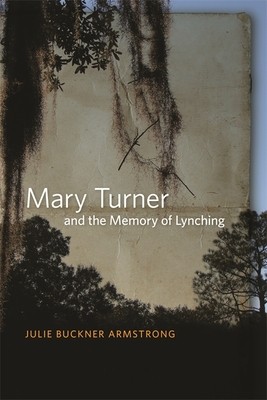
- We will send in 10–14 business days.
- Author: Julie Buckner Armstrong
- Publisher: University of Georgia Press
- ISBN-10: 0820337668
- ISBN-13: 9780820337661
- Format: 15.2 x 22.9 x 1.7 cm, minkšti viršeliai
- Language: English
- SAVE -10% with code: EXTRA
Reviews
Description
Mary Turner and the Memory of Lynching traces the reaction of activists, artists, writers, and local residents to the brutal lynching of a pregnant woman near Valdosta, Georgia. In 1918, the murder of a white farmer led to a week of mob violence that claimed the lives of at least eleven African Americans, including Hayes Turner. When his wife Mary vowed to press charges against the killers, she too fell victim to the mob.
Mary's lynching was particularly brutal and involved the grisly death of her eight-month-old fetus. It led to both an entrenched local silence and a widespread national response in newspaper and magazine accounts, visual art, film, literature, and public memorials. Turner's story became a centerpiece of the Anti-Lynching Crusaders campaign for the 1922 Dyer Bill, which sought to make lynching a federal crime. Julie Buckner Armstrong explores the complex and contradictory ways this horrific event was remembered in works such as Walter White's report in the NAACP's newspaper the Crisis, the "Kabnis" section of Jean Toomer's Cane, Angelina Weld Grimké's short story "Goldie," and Meta Fuller's sculpture Mary Turner: A Silent Protest against Mob Violence. Like those of Emmett Till and Leo Frank, Turner's story continues to resonate on multiple levels. Armstrong's work provides insight into the different roles black women played in the history of lynching: as victims, as loved ones left behind, and as those who fought back. The crime continues to defy conventional forms of representation, illustrating what can, and cannot, be said about lynching and revealing the difficulty and necessity of confronting this nation's legacy of racial violence.EXTRA 10 % discount with code: EXTRA
The promotion ends in 21d.02:14:26
The discount code is valid when purchasing from 10 €. Discounts do not stack.
- Author: Julie Buckner Armstrong
- Publisher: University of Georgia Press
- ISBN-10: 0820337668
- ISBN-13: 9780820337661
- Format: 15.2 x 22.9 x 1.7 cm, minkšti viršeliai
- Language: English English
Mary Turner and the Memory of Lynching traces the reaction of activists, artists, writers, and local residents to the brutal lynching of a pregnant woman near Valdosta, Georgia. In 1918, the murder of a white farmer led to a week of mob violence that claimed the lives of at least eleven African Americans, including Hayes Turner. When his wife Mary vowed to press charges against the killers, she too fell victim to the mob.
Mary's lynching was particularly brutal and involved the grisly death of her eight-month-old fetus. It led to both an entrenched local silence and a widespread national response in newspaper and magazine accounts, visual art, film, literature, and public memorials. Turner's story became a centerpiece of the Anti-Lynching Crusaders campaign for the 1922 Dyer Bill, which sought to make lynching a federal crime. Julie Buckner Armstrong explores the complex and contradictory ways this horrific event was remembered in works such as Walter White's report in the NAACP's newspaper the Crisis, the "Kabnis" section of Jean Toomer's Cane, Angelina Weld Grimké's short story "Goldie," and Meta Fuller's sculpture Mary Turner: A Silent Protest against Mob Violence. Like those of Emmett Till and Leo Frank, Turner's story continues to resonate on multiple levels. Armstrong's work provides insight into the different roles black women played in the history of lynching: as victims, as loved ones left behind, and as those who fought back. The crime continues to defy conventional forms of representation, illustrating what can, and cannot, be said about lynching and revealing the difficulty and necessity of confronting this nation's legacy of racial violence.

Reviews